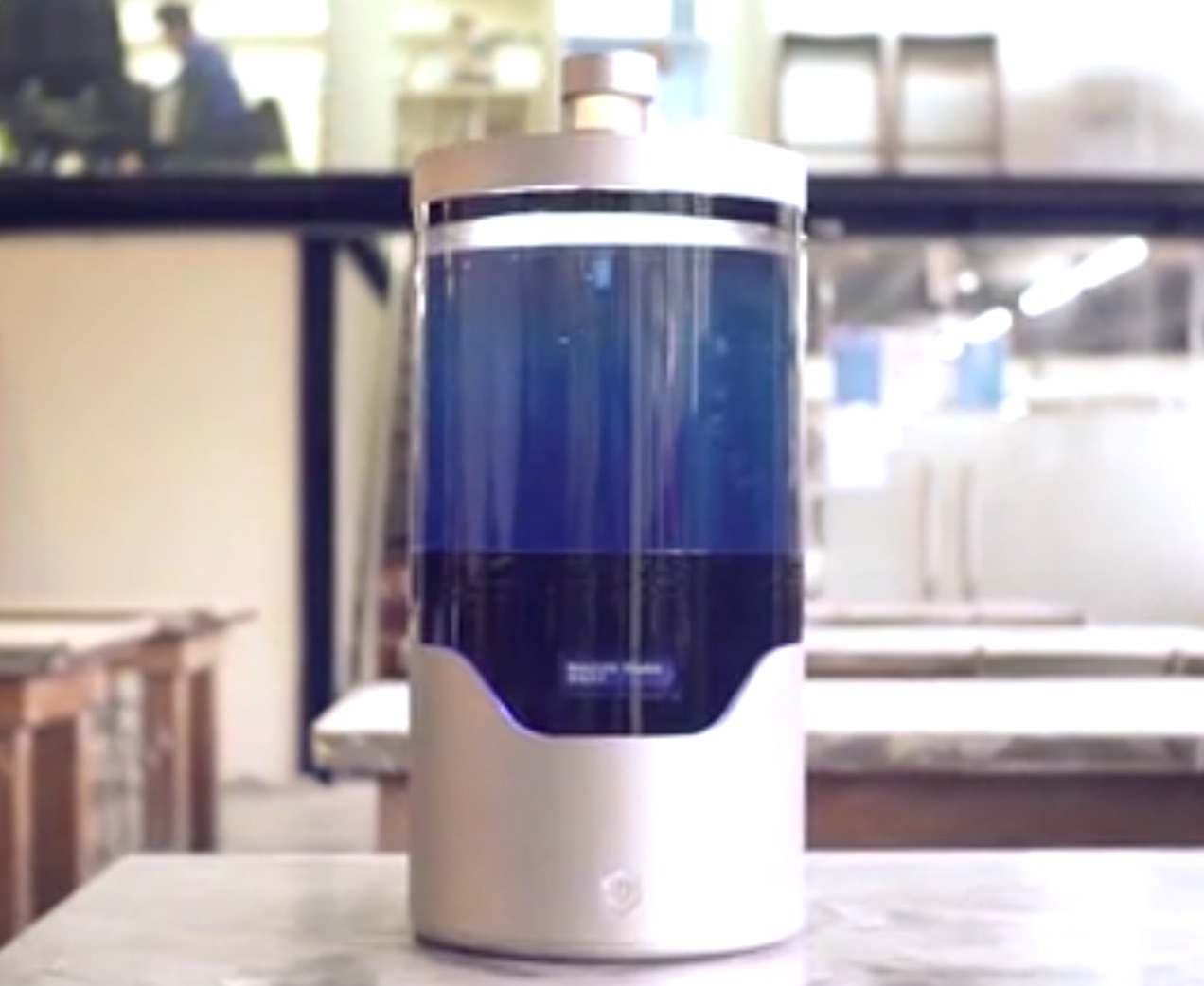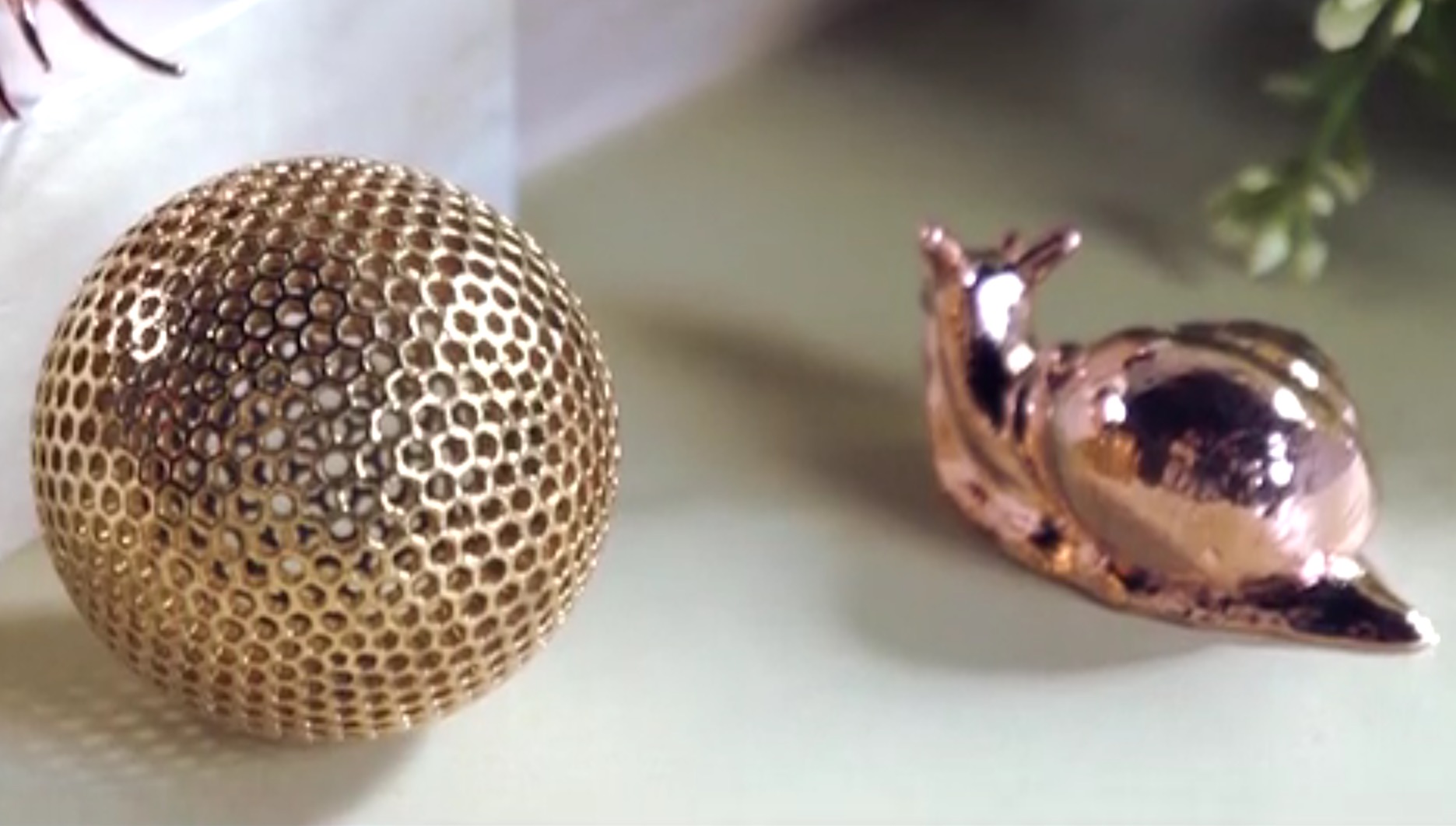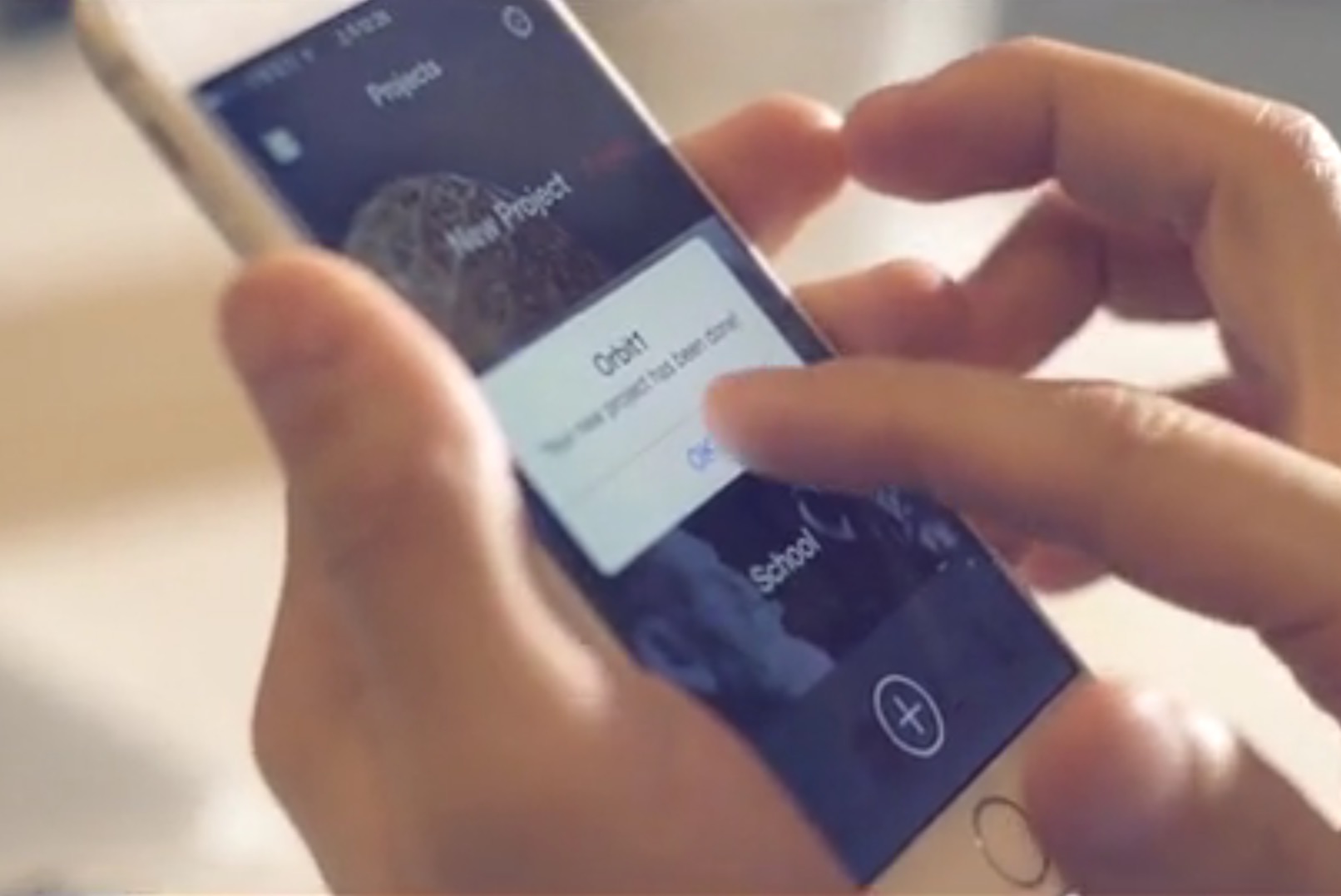
Tired of plain plastic 3D prints? A new device can electroplate your prints in metal: The Orbit1.
Electroplating has long been an industrial technology used for many purposes, however, accessibility to this capability has been restricted, primarily due to cost. Centralized electroplating services use expensive gear to plate objects for industry and that simply isn’t an approach familiar or welcoming to today’s users of personal 3D printers.
To overcome this barrier, Monolith Studio has developed a personal electroplating machine, the Orbit1.
Electroplating, if you’re not familiar with it, uses a electricity to collect dissolved metals onto the surface of a target object. Anodes and cathodes are immersed in an electrolyte solution and when power is applied, atoms move from one surface to the other, “plating” the surface uniformly.

This process permits you to convert your 3D prints from plain plastic to a fully metallic appearance. They’ll even be slightly stronger, depending on the type of metal and thickness of plating.
The Orbit1 is a stylish desktop device that performs this process for you in a safe and reliable manner.

The specifications suggest you’ll be able to electroplate objects up to 150 x 150 x 200mm in copper and nickel. The company says they’ll add gold, palladium and more options if they meet their fundraising targets.
Usage is very straightforward:
- 3D print an object. Geometry doesn’t really matter at this point
- Smooth the surface of the print manually, chemically or otherwise to the degree you’d like
- Spray the object’s surface with their proprietary conductive paint (this transforms the plastic object into an electrically conductive item)
- Wait for the paint to dry
- Drop the object in the Orbit1 and get the plating started
What’s even more interesting is that you don’t need a 3D printed object to use the Orbit1. You can electroplate anything as long as it can accept the conductive spray. Flowers, food, glass or other samples are easily electroplated with the Orbit1. You can even make PCBs with copper plating. Just don’t plate your pets.
Plating takes time proportional to the surface area being plated, as the Orbit1 can extract particles from the source at a specific rate. Larger surface area, longer plating time. However, they say the plating can take as low as a few minutes for a small object, but a couple of hours for a larger one. While there is apparently no limit to the thickness you can plate (just leave it running longer), the company recommends a thickness of 0.1 – 0.2mm.

Control of the Orbit1 is interesting, as it’s done only from a mobile app. There is no sophisticated control panel on the device; you must use the app. From there you can scan the surface of the object to determine roughly how much metal and time are required for plating, as well as starting and stopping the plating process.
There’s one concern with the device: the electrolyte solution can be toxic, considering the dissolved metals, thus disposal is a question. In the USA, the company will provide a means of recycling, but in other areas, that’s not as easy. To encourage responsible disposal, the company will require you to return used plating solution before they send you a fresh supply.
How much does this item cost? For their early-bird Kickstarter backers, they’re charging USD$1,999, a discount from their intended retail price of USD$2,999. But keep in mind that this machine has several consumables that must be renewed as you use the device. However, the cost of your plating activity will be significantly less than outsourcing to a conventional electroplater, up to 99% less according to the company.
Via Kickstarter and Orbit1

